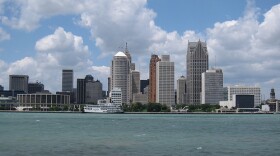Detroit's immigrant population is on the rise once again.
After taking a dip between 2000 and 2010, the number of immigrants in the city has grown more than 12% since then, according to U.S. Census Bureau data analyzed by the non-profit group Global Detroit.
That accounts for more than 4,000 new Detroiters, says Global Detroit Executive Director Steve Tobocman.
“That is a major turnaround, and hopefully it’s a bellwether for the stabilization of neighborhoods in the city of Detroit,” Tobocman said.
While the growth came as the city’s overall population continued to decline, Tobocman said it’s a hopeful sign that things will begin to stabilize — and maybe turn the corner.
Of the 29 major cities that have reversed population loss since 1980, “all have had significant immigrant growth as a source of their rebound. None have done it without significant immigrant growth,” he said.
Detroit’s newcomers are a “pretty diverse” group, Tobocman says: Latinos from Mexico and Central America, concentrated in southwest Detroit; Bangladeshis in the Detroit/Hamtramck Banglatown; and growing pockets of Latino, Arab and West African immigrants on the city’s far west side.
Global Detroit touts immigration as the “untold American community revitalization strategy that has worked for generations and is a very viable strategy in Detroit.”
The group recently finished research highlighting the potential for immigrant families, now renting in Detroit and other Rust Belt cities, to affordably buy and rehab vacant housing.
Tobocman said the group has been careful to fashion its outreach immigrant communities in ways that include the city’s African-American majority.




